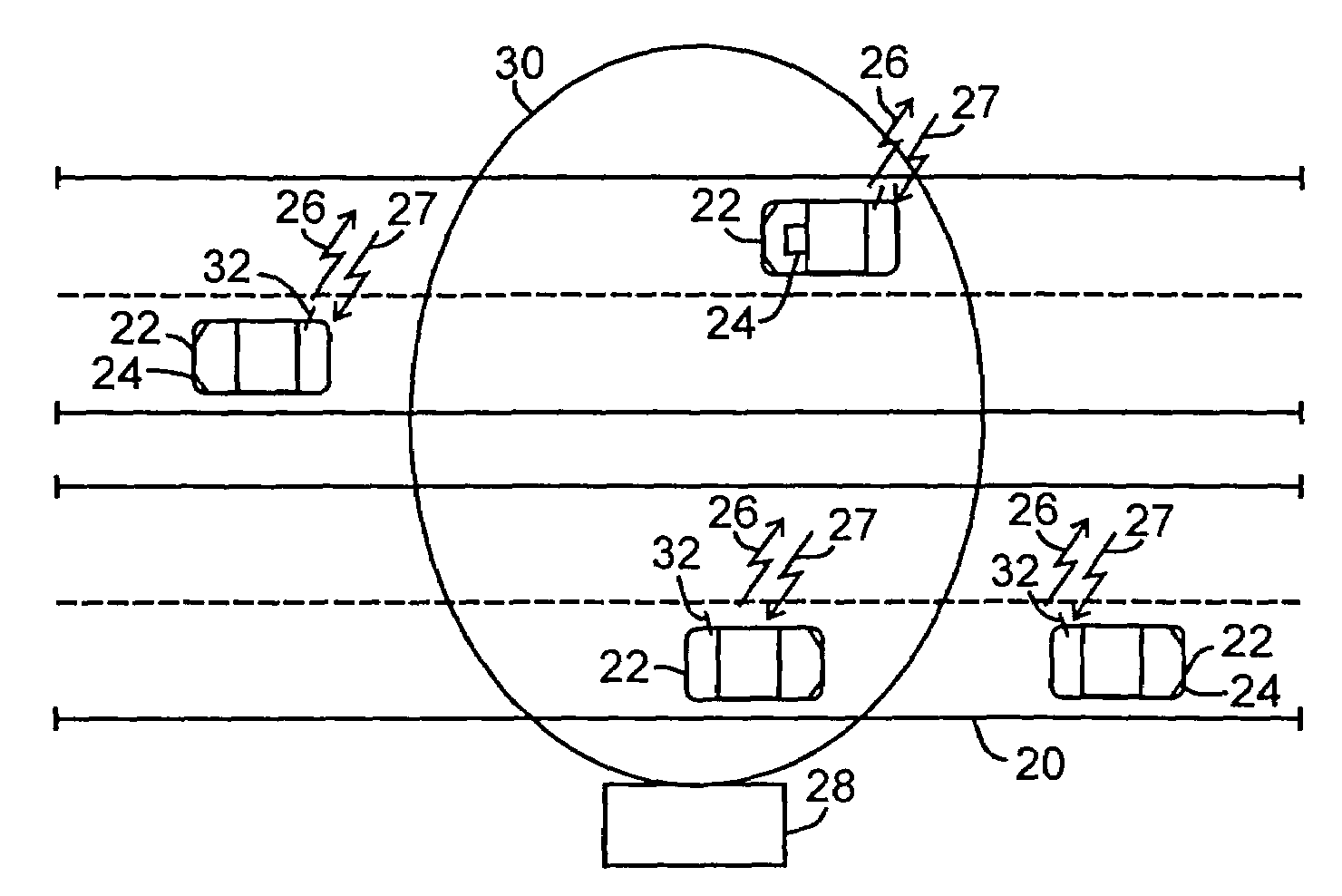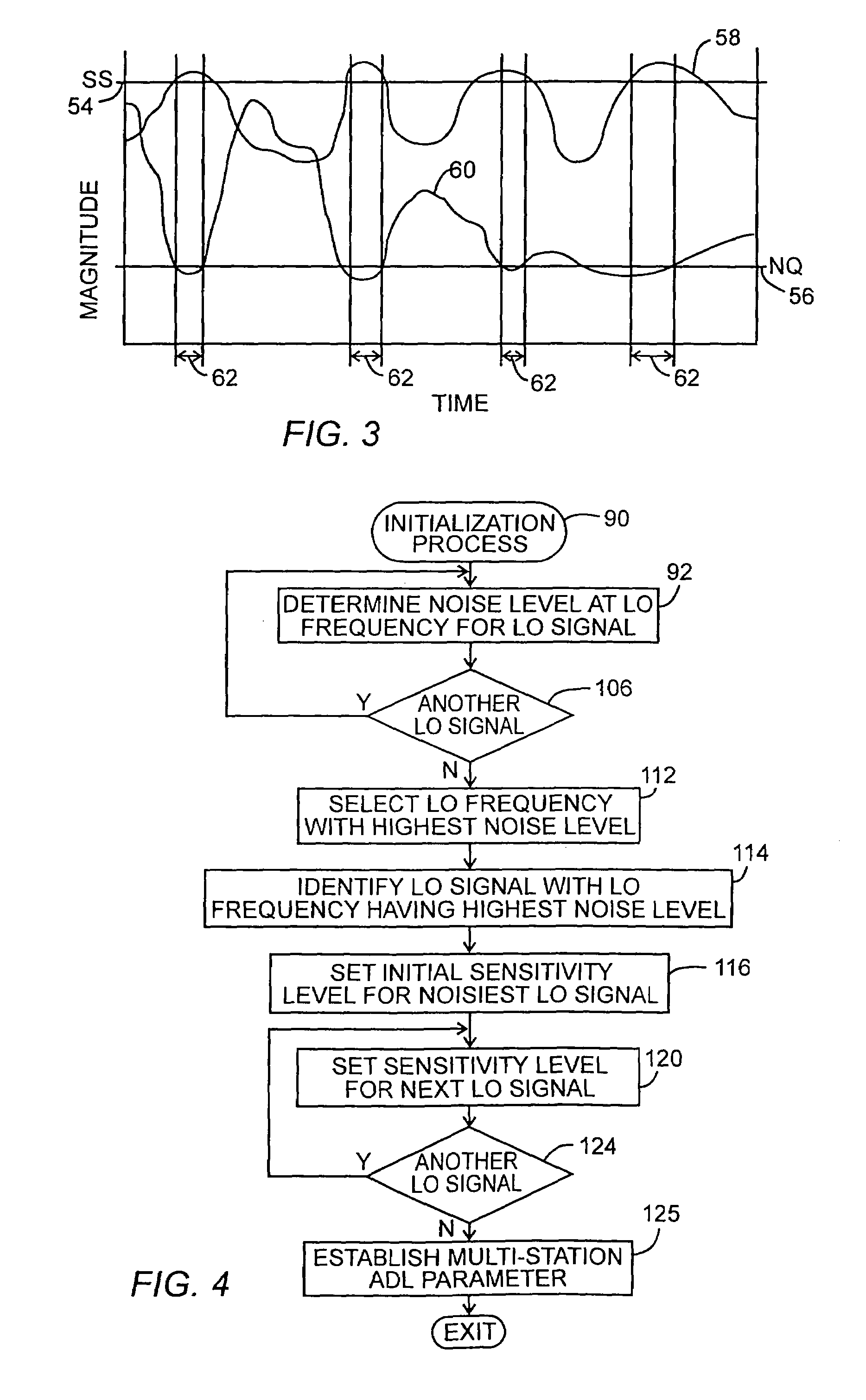Bias compensating remote audience survey system and method
a remote audience and survey technology, applied in the field of broadcast station identification, can solve the problems of radio station identification, radio station accuracy, and inability of listeners to make a record of listening tendencies, and achieve the effect of improving the accuracy of audience survey data
- Summary
- Abstract
- Description
- Claims
- Application Information
AI Technical Summary
Benefits of technology
Problems solved by technology
Method used
Image
Examples
Embodiment Construction
[0027]FIG. 1 shows a layout diagram of an example environment within which a preferred embodiment of the present invention may operate. FIG. 1 shows a road 20 on which any number of radio-equipped vehicles 22, such as cars, trucks, motorcycles, and the like, may travel in either of two directions.
[0028]Many of vehicles 22 include a radio or tuner 24 for receiving radio broadcast signals 27 for commercial broadcast stations, such as conventional AM, FM, television, and the like. For purposes of the following description, radios and tuners are synonymous including all of the components thereof, such as antennas, loudspeakers, and the like. Radios 24 detect radio broadcast signals 27 through a well known demodulation process which requires radios 24 to generate predetermined signals, such as local oscillator (LO) signals 26 related to radio broadcast signals 27 for radio stations.
[0029]The preferred embodiment of the present invention described herein compensates for station bias when ...
PUM
 Login to View More
Login to View More Abstract
Description
Claims
Application Information
 Login to View More
Login to View More - R&D
- Intellectual Property
- Life Sciences
- Materials
- Tech Scout
- Unparalleled Data Quality
- Higher Quality Content
- 60% Fewer Hallucinations
Browse by: Latest US Patents, China's latest patents, Technical Efficacy Thesaurus, Application Domain, Technology Topic, Popular Technical Reports.
© 2025 PatSnap. All rights reserved.Legal|Privacy policy|Modern Slavery Act Transparency Statement|Sitemap|About US| Contact US: help@patsnap.com



